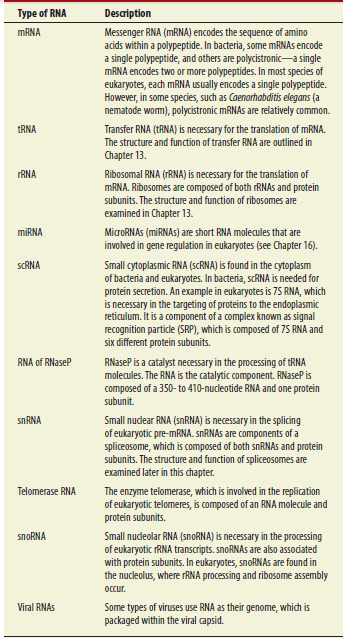
Genetics: Analysis and Principles 5th Edition by Robert Brooker
Edition 5ISBN: 978-0073525341
Genetics: Analysis and Principles 5th Edition by Robert Brooker
Edition 5ISBN: 978-0073525341 Exercise 52
As described in Table 12.1, several different types of RNA are made, especially in eukaryotic cells. Researchers are sometimes interested in focusing their attention on the transcription of protein-encoding genes in eukaryotes. Such researchers want to study mRNA. One method that is used to isolate mRNA is column chromatography. (Note: See the Appendix for a general description of chromatography.) Researchers can covalently attach short pieces of DNA that contain stretches of thymine (i.e., TTTTTTTTTTTT) to the column matrix. This is called a poly-dT column. When a cell extract is poured over the column, mRNA binds to the column, but other types of RNA do not
a. Explain how you would use a poly-dT column to obtain a purified preparation of mRNA from eukaryotic cells. In your description, explain why mRNA binds to this column and what you would do to release the mRNA from the column
b. Can you think of ways to purify other types of RNA, such as tRNA or rRNA
Table 12.1 Functions of RNA Molecules

a. Explain how you would use a poly-dT column to obtain a purified preparation of mRNA from eukaryotic cells. In your description, explain why mRNA binds to this column and what you would do to release the mRNA from the column
b. Can you think of ways to purify other types of RNA, such as tRNA or rRNA
Table 12.1 Functions of RNA Molecules

Explanation
In this question, we discuss purificatio...
Genetics: Analysis and Principles 5th Edition by Robert Brooker
Why don’t you like this exercise?
Other Minimum 8 character and maximum 255 character
Character 255



